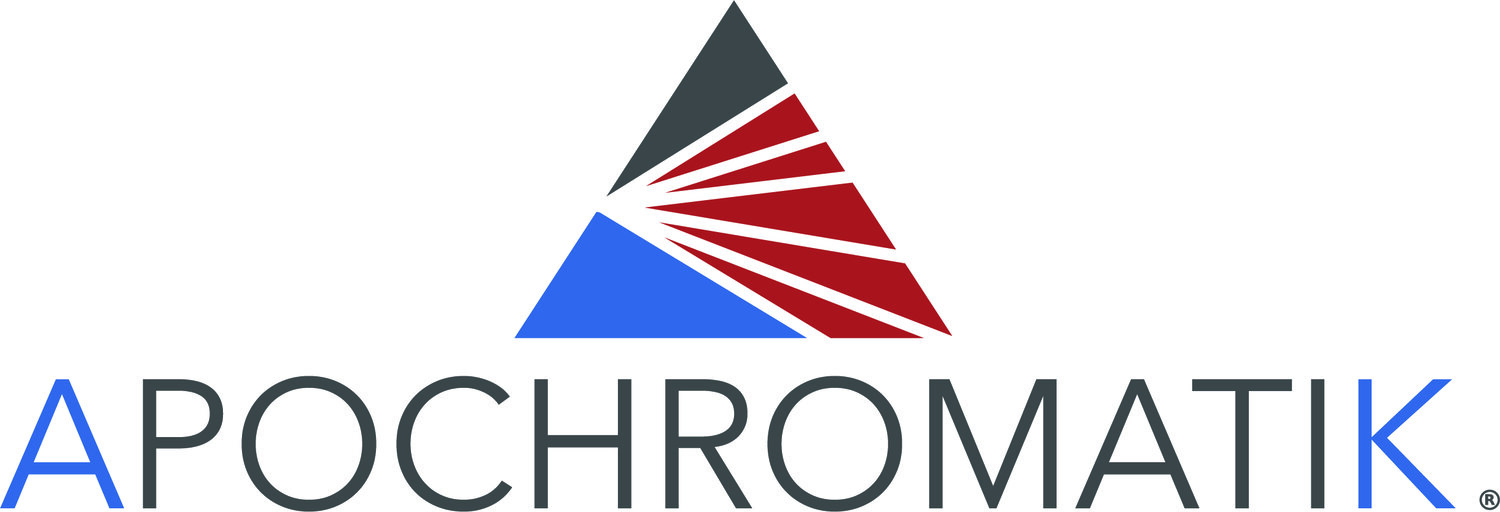The Apochromatik Guide to Mentoring: Part III – The One Thing You Must Do to Make the Most of a Formal Mentoring Program
—Amy M. Gardner
Not everyone is involved in formal mentoring programs, but we’ve had several requests to address how to make them more worthwhile.
Before we jump into that topic, though, January is National Mentoring Month, so we’ve talked about mentor and mentee expectations, and about differences between sponsors, mentors, coaches, and friends. Later this week we will tackle the three types of mentors that every professional needs to succeed, but if you can’t wait to get started strengthening your own mentor relationships, download the Apochromatik Mentor Finder tool by joining the Apochromatik email list.
Back to how to make the most of a formal mentoring program.
Formal mentoring programs often get a bad rap. We sometimes work with organizations and employers that have set up formal mentoring programs and haven’t gotten the results they wanted. Sometimes that is due to the way that programs are designed, but sometimes the problem comes from the participants themselves who often aren’t trained on how to be a good mentor or a good mentee.
So let’s assume that the program is designed thoughtfully, and you have the power to make the most of it. How do you do that regardless of whether you are a mentor or mentee? There’s only one thing you need to do: Go all-in.
Going all-in starts with taking the application seriously. Often people decided to participate in a program, but then put off the application, just scribble down some answers right at the last minute, and send it in. Instead, be thoughtful when signing up for a formal mentoring program. As the mentee, think about your strengths and weaknesses, what you could benefit from mentoring on, and why are you interested in the program in the first place. In particular, think about your other mentors and what you are looking for from a mentor through this program. (Thursday’s post on types of mentors you need will help with this.) As the mentor, think about what you can contribute, why you want to mentor someone else, and the areas that you particularly hope to be able to help address. By being thoughtful in the application process, you help program organizers make a more thoughtful match.
I also recommend that you turn the application in early, because the mentoring matches often start before the application deadline. If you submit your application early, you often stand a better chance of being paired with a mentor or mentee who is a closer match to your interests.
Another piece of going all in is to show up to events even if your mentor or mentee cannot attend. By attending events even if your counterpart cannot, you will still benefit from a big advantage of formal mentoring programs, which is getting to know the other people in the program. When you think about it, who attends mentoring program events? People who value their own professional development and want to help others learn and grow. In other words, good people to spend time with, even if your mentor or mentee cannot attend.
Next, go all-in by resisting the temptation to write off the person that you’re paired with if you don’t click immediately. It’s common for participants to assume when they don’t find an initial connection that they were just matched up with somebody they have nothing in common with, and they just write it all off. Instead, get to know him or her. If you spend some time together and still struggle to find a connection, organize small group events of four or five mentors and their mentees from the program. That way if you’re the mentor, you can make sure that your mentee is getting help and attention. (This also works if you click but find you are not able to give your mentee the time and attention you had intended when you signed up.) Getting together with other mentoring pairs will also give everyone the chance to expand their networks, and meet people with whom they may want to establish more organic mentoring relationships in the future. By continuing to invest and go all in on the formal mentoring program, you have a much better chance of having a good mentoring relationship come out of it, whether it’s with the person you originally paired with or with someone else.
Another way to continue to go all in is for the mentor to invite the mentee to professional events or activities outside of the formal program. As a mentee, if your mentor hasn’t been able to attend many program events or if you’re struggling to connect, ask if s/he is going to any industry events that you might be able to attend with him or her. That way you can spend time together, you can expand your network, and you can show your mentor that you’re able to hold your own at networking events and make them look good.
Remember that even if you are in a formal program with several events each year, they are often just not enough, especially if you don’t make them all, to build a real mentoring relationship. That’s why going all-in means spending time with your counterpart outside those formal events, as well as following the tips we covered in Part II: 8 Things Mentees and Mentors Want.
Formal mentoring programs are never perfect, but intentionally going all-in can help both mentors and mentees make the most of the opportunity they present.
Join us tomorrow for the Video of the Week (on mentoring), Wednesday when we’ll address how to know if you’re ready to be a mentor, and Thursday when we wrap up the Apochromatik Guide to Mentoring with The Three types of Mentors Every Professional Needs to Succeed. And don’t forget to download the free Apochromatik Mentor Finder tool by joining the Apochromatik email list in the sidebar of this post.

